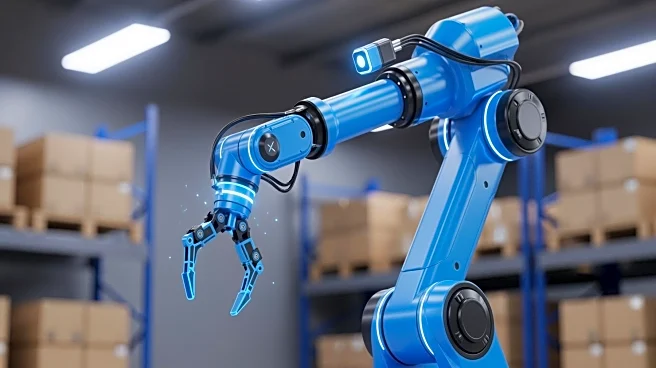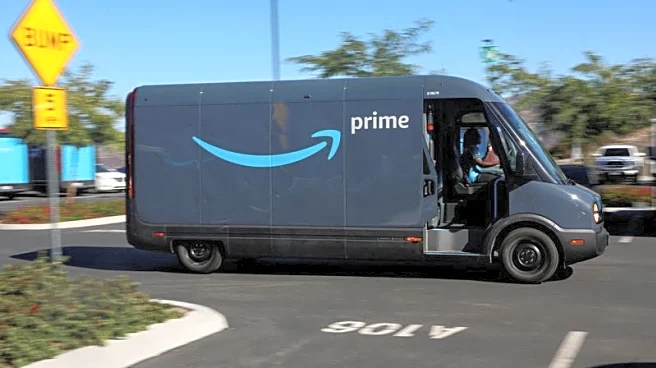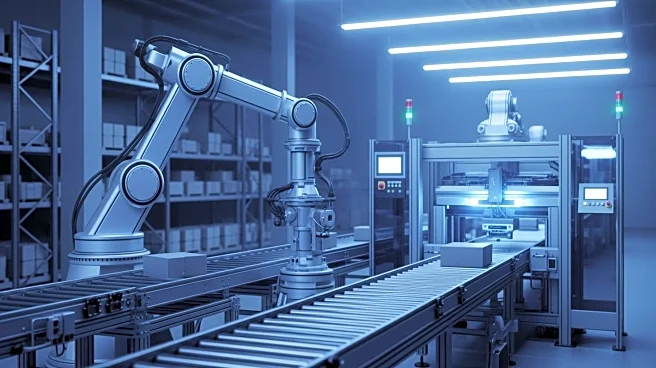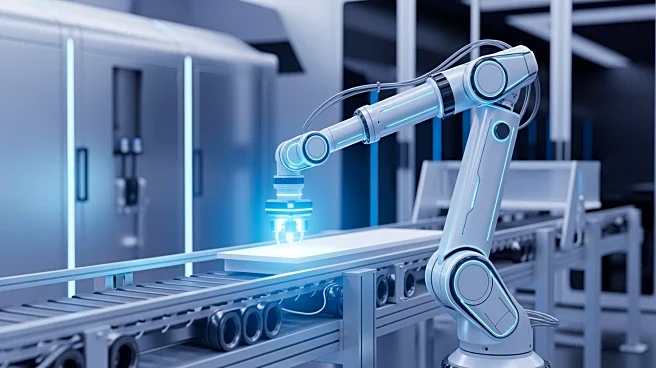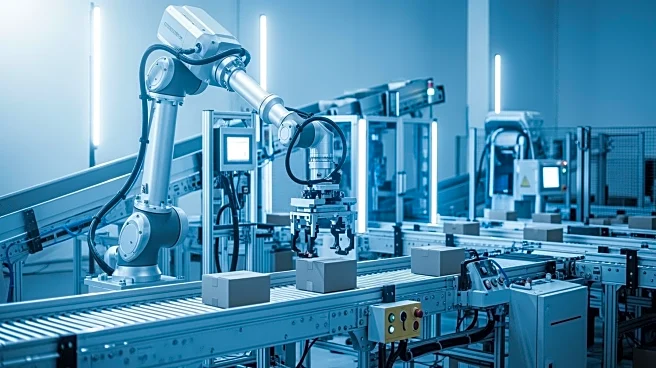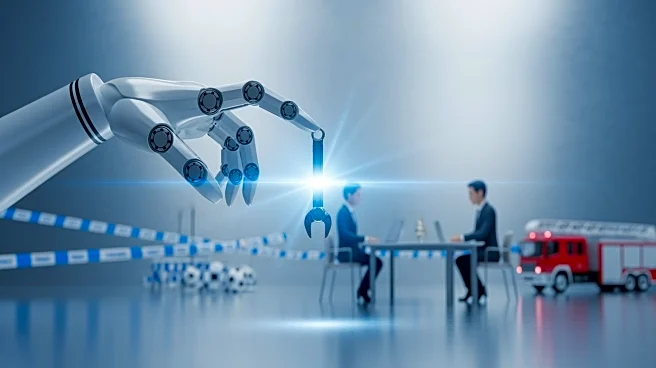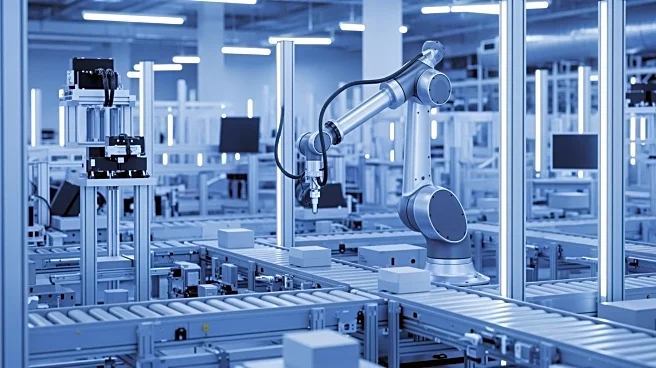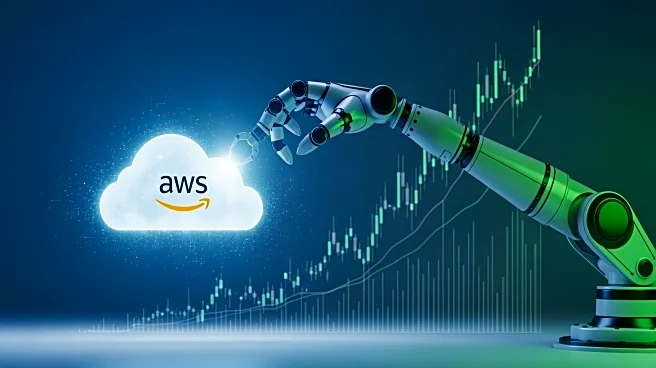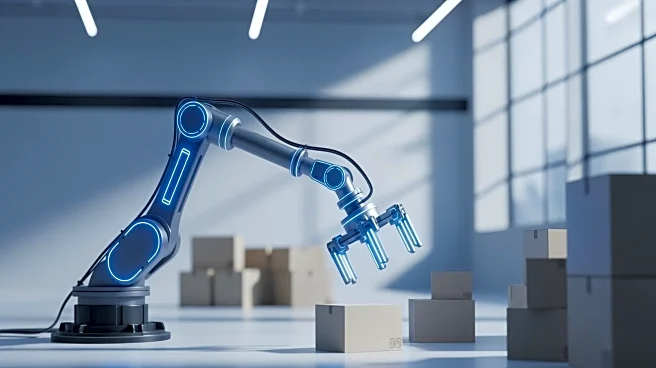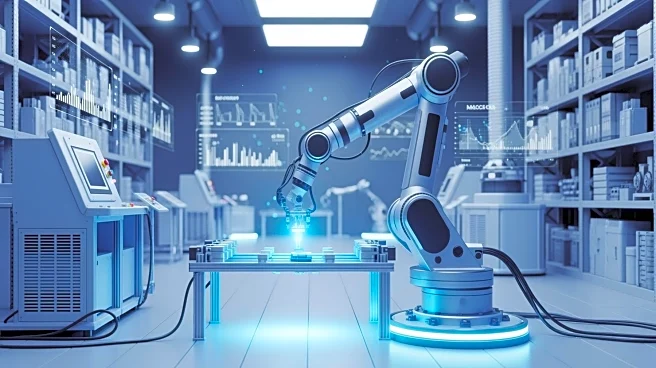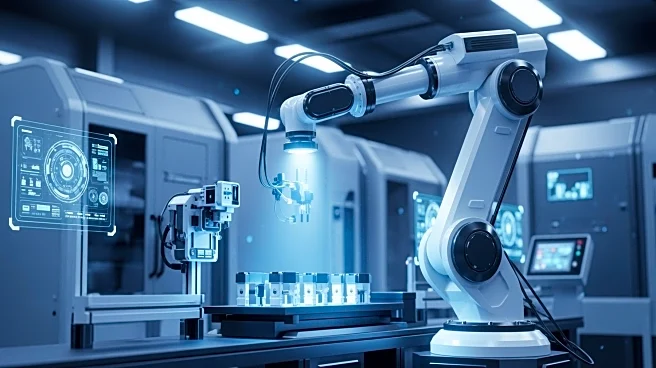What's Happening?
Amazon has unveiled a new robot named Blue Jay, designed to improve efficiency in its warehouses. Blue Jay is capable of handling 75% of the items stored by Amazon and is expected to become a core technology
for Same-Day delivery sites. Developed in just over a year, the robot uses AI, digital twins, and data from existing robots to coordinate multiple robotic arms, streamlining tasks that previously required separate stations. This innovation is part of Amazon's broader strategy to optimize operations and reduce costs, as highlighted by CEO Andy Jassy's comments on the impact of AI on workforce efficiency.
Why It's Important?
The introduction of Blue Jay signifies a shift in Amazon's operational strategy, focusing on automation to enhance productivity and reduce costs. While the company emphasizes that the technology is meant to assist rather than replace human workers, the increased efficiency could lead to a reduction in the number of human roles required in warehouses. This development reflects a broader trend in the industry towards automation, which could have significant implications for employment and labor dynamics in the logistics sector. Amazon's move also highlights the growing role of AI in transforming traditional business operations.
What's Next?
Amazon plans to continue integrating Blue Jay into its operations, with the potential for further automation across its facilities. The company is also preparing to fill 250,000 positions for the holiday season, indicating a balance between automation and human labor. As the technology evolves, Amazon may face scrutiny from labor groups and policymakers concerned about job displacement. The company's approach to managing this transition will be closely watched as a case study in the integration of AI and robotics in large-scale operations.
